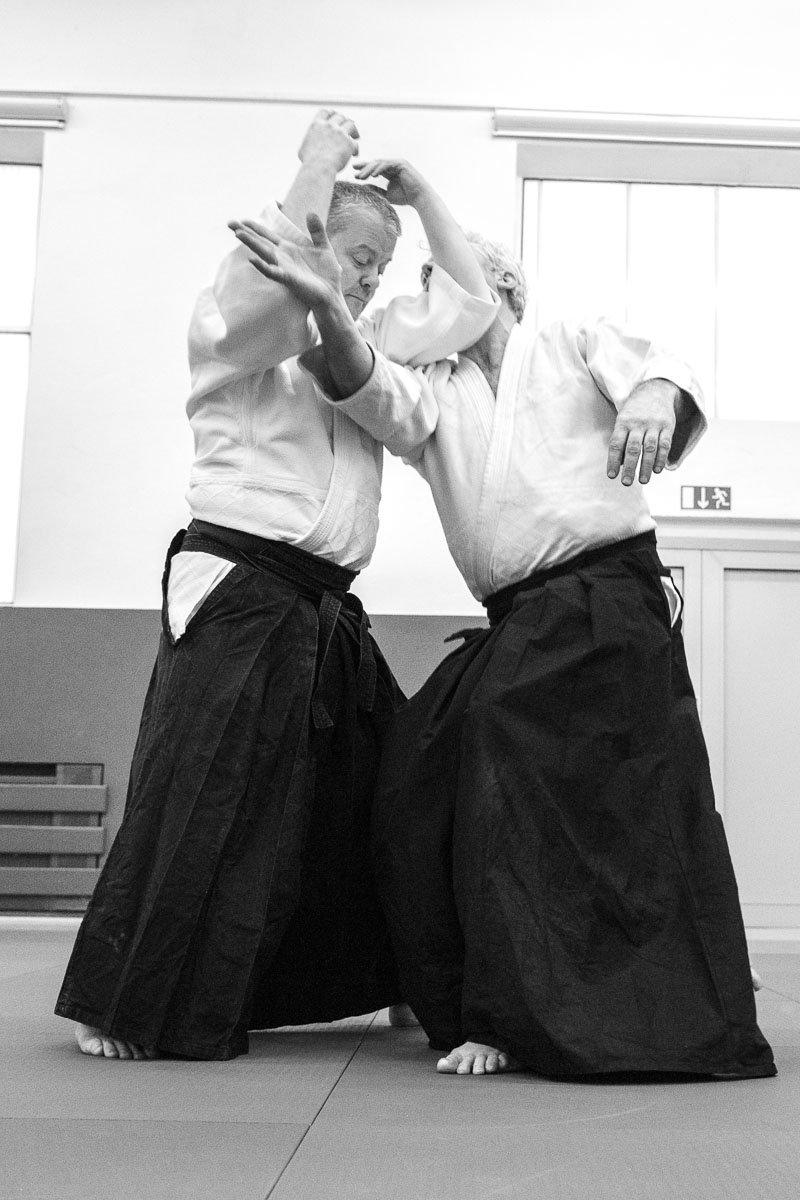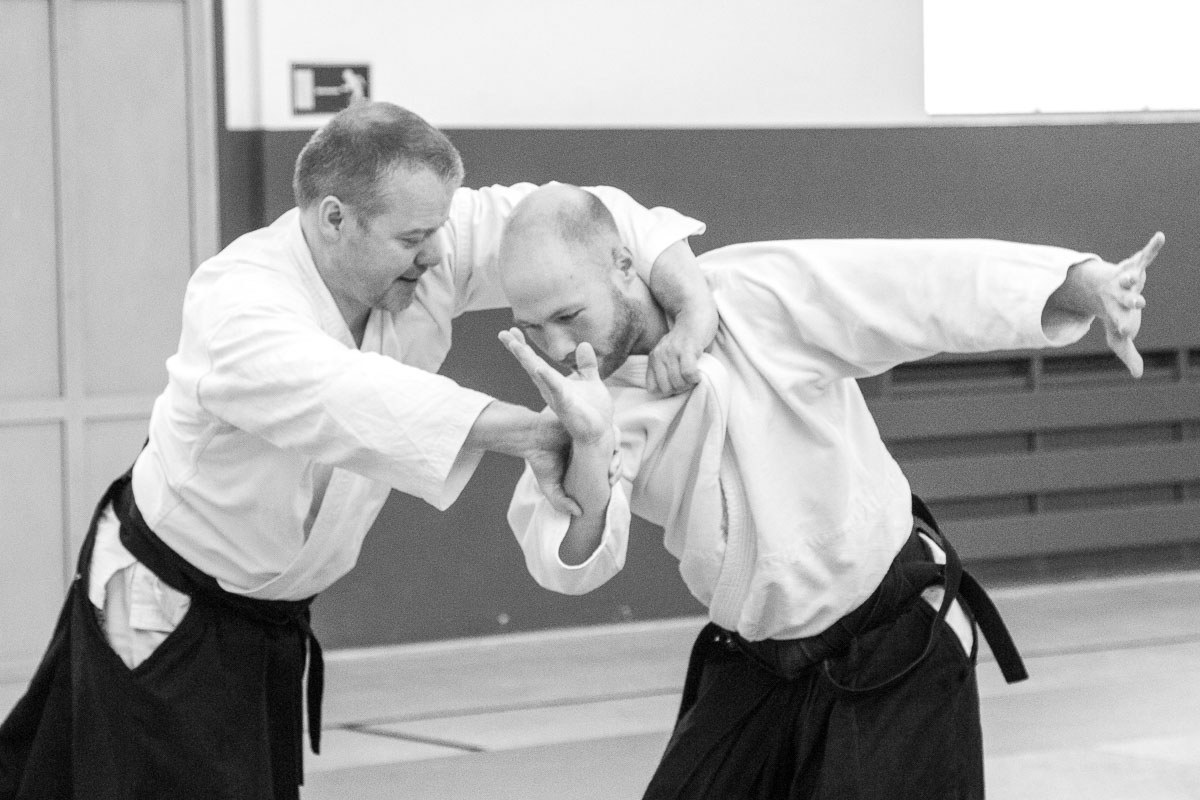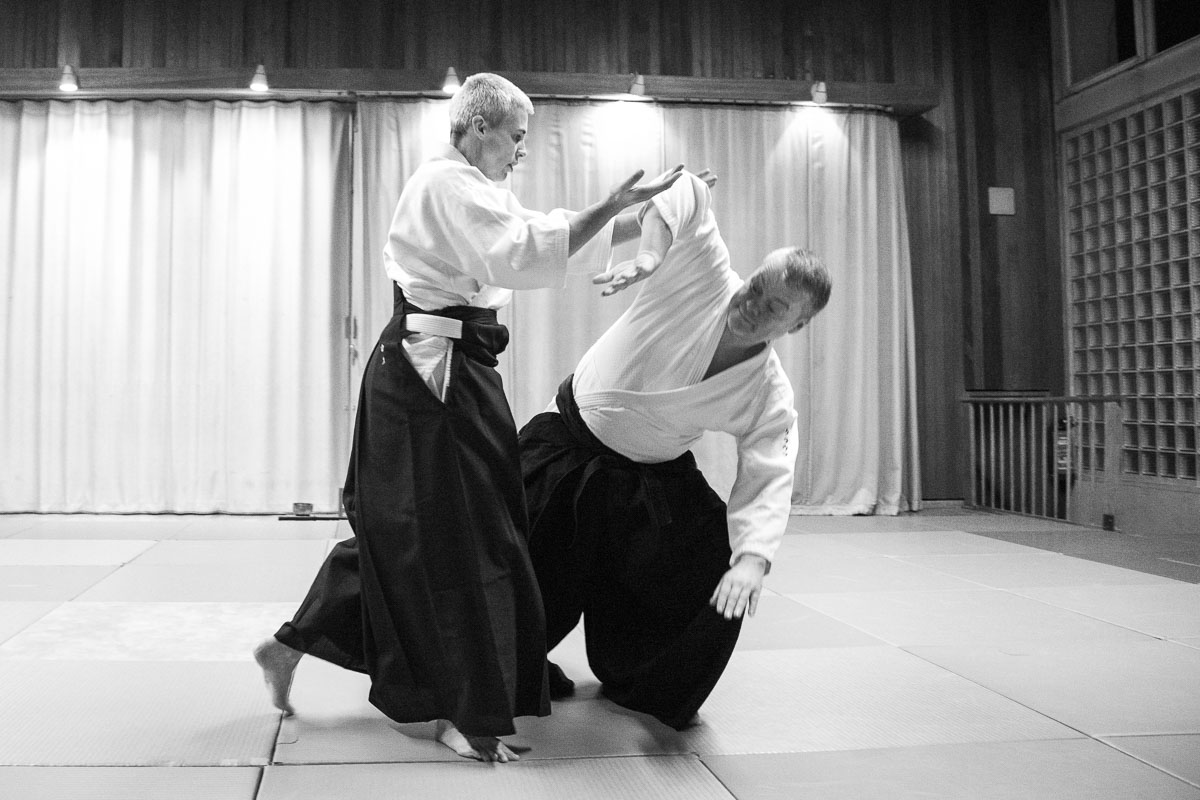Q&A with Klaus Messlinger
Why do you practise aikdo?
"I practise Aikido because I want to understand who I am, what drives me and how I respond to the dynamics of the community. By exchanging with other practitioners, Aikido offers comprehensive experiences—both mentally and physically—which extend to my life outside of the dojo.
Also, I enjoy being dared by this martial art. Our international community is like a big extended family which supports me in my research, regularly challenging and encouraging me. Every time I visit one of their dojos in Germany and abroad it feels like coming home to me.
In our individualised society we hardly come within touching distance any more, detachment and seclusion from other people prevails. Aikido helps us to naturally re-establish closeness, regular practice helps us to develop and maintain a balanced relationship to others.
My friend Svein Hatlen from Stockholm sums up the Why with a simple assertion: Aikido makes people happy."
How do you practise?
"I chose to pursue a direction of Aikido which puts the attacker's (uke's) dynamics first, researching what opportunities it brings. Instead of simply carrying out a technique on uke, the technique responds to the condition, intention and intensity of my partner. It is like a conversation, where uke asks a question and I look for a suitable reply. This, in my opinion, is the essence of Aikido.
It is an exciting challenge to find the moment when uke feels an advantage, but does not sense my reaction and therefore has no leverage point to counter me. I become part of the movement and shape it. At the same time, uke's well-being is important so the response should be painless and non-destructive, otherwise Aikido would fail to resolve conflicts.
The expressions I use during class play an important role in teaching, because our language guides our awareness and influences our movements and behavioural patterns. For example, I replace
- "breaking uke's balance" with "letting uke search for balance", because uke is the aggressor, not me,
- "controlling uke" with "maintaining an alert connection to uke", because control is a fatal illusion, and
- "throwing uke" with "entering uke's movement", because uke's reaction depends on the situation.
(This approach was inspired by my teachers Jan Nevelius and Ulli Kubetzek.)
I often get asked whether Aikido is effective. The reply depends on the goals that we set for ourselves and on the expectations we have towards our martial art. If we believe it prepares us for every kind of attack, then we may very well find ourselves bringing a knife to a gun fight (in a manner of speaking).
But if we practise earnestly and keep scrutinising our applications, then we can learn to prepare ourselves better for conflict situations. It is in this sense that we become more effective. Therefore I find it essential to remain a student for life, especially as a teacher. This is the only way to expand my possibilities."
What are you teaching?
"The What consists of various elements:
- Aiki taiso: movement and perception exercises to improve body-awareness and attention
- Ukemi: accepting the movement, overcoming one's own resistance
- Kihon waza: basic techniques to give my research a structure
- Kimusubi: sensibility for and connection to the dynamics of my partner
- Jiu waza: free-style attack and defense to develop awareness for the spontaneous flow of the movement and to learn to trust intuition
- Buki waza: working with weapons to practise posture, distance and timing to improve empty-handed techniques
Kihon waza in Aikido is often critisised. Attacks and techniques look rehearsed and little plausible, uke reacts like on remote control, and the whole practice is seen more like some kind of dance. Indeed, it is a major problem if ukes anticipate the technique in their attack, e.g. by starting to fall before it is necessary. Or if they strike without intention and focus, out of fear to hurt their partners. Or if they stop attacking seriously and cling to the contact passively.
If we practise honestly, we assume that ukes are not attacking blindly, but that they are aware of possibilities, openings and safe positions and that they keep attacking. They may find an opening and reverse the technique, or they realise that they have failed and accept it. This is the framework of Aikido practice.
In this sense, kihon waza is a training convention that is meant to help us identify typical situations: it is a story that we are telling, where we assume that the leading characters have certain intentions and react in a certain manner. These stories should be as diverse as possible and they should always be scrutinised for their plausibility, especially regarding the attack. But they are very helpful to develop our reaction patterns, so that in an application – e.g. jiu waza – we can work freely and quickly adapt to changing situations.
There is also a lot of misunderstanding regarding buki waza, i.e. working with weapons. The intention behind it is not to practise self-defense against weapon attacks — our exercises and techniques are not designed for this purpose. In particular the knife work is not suited to deal with real-life knife attacks! So why do we do it? The goal is to develop a good posture, to improve sensibility for the right distance and the right timing, and eventually to strengthen our self-confidence and respect for our partners. The bottom line is: weapons work improves our empty-handed Aikido techniques."
Continue to → FAQ






